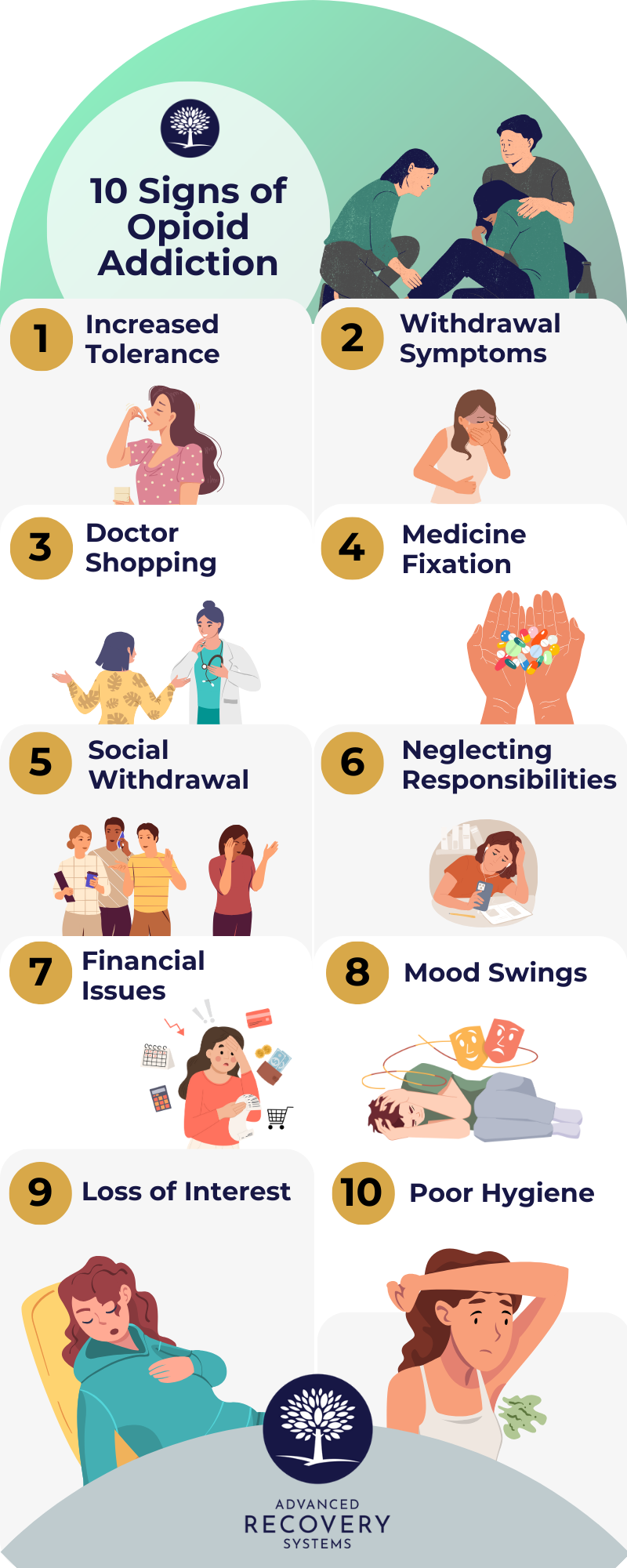Opioid addiction is complex and has many causes, but The Recovery Village Columbus can help put you on the road to addiction recovery.
Someone using opioids regularly can become dependent, often leading to overdoses and deaths, particularly with illegal street drugs like heroin. However, legal prescription opioids like oxycodone, hydrocodone, morphine and codeine can be just as dangerous when misused, and knowing the signs of opioid use is important.
Causes of Opioid Addiction
Opioid addiction is complex and can be divided into genetic, behavioral and environmental causes. Together, these causes can make a person more likely to develop an opioid addiction.
Genetic Causes
This Season, Give Yourself the Gift of a Fresh Start.
Whether you are struggling with addiction, mental health or both, our expert team is here to guide you every step of the way. Don’t wait— reach out today to take the first step toward taking control of your life.
- Parents with substance use disorders
- Being born with congenital disabilities, including neurological disorders
- Physical, neurological or learning disabilities
- Mental health conditions, including anxiety or depression
Behavioral Causes
- Aggressiveness, rebelliousness and resistance to authority
- Problems appropriately expressing emotions
- Unprotected sex and teen pregnancy
- Feelings of failure and lack of self-confidence
- Vulnerability to peer pressure
Environmental Causes
- Living in an economically depressed area with high unemployment
- Being exposed to people who commit crimes and use drugs
- Low educational levels
- Cultural and language barriers to accessing services like education and healthcare
Risk Factors of Opioid Addiction
Certain behaviors can put you at risk of developing an opioid addiction. These risk factors include:
- Taking opioids that do not belong to you, whether they are prescribed opioids or street drugs
- Borrowing, buying or stealing opioids from other people
- Taking a higher opioid dose than prescribed by your doctor
- Taking your opioids more frequently than prescribed by your doctor
- Exaggerating your symptoms to try to get more opioids
- Going to different doctors or pharmacies (“doctor shopping”) to try to obtain an opioid prescription
If you recognize that you have risk factors for opioid addiction, speak to your doctor or an opioid addiction specialist at The Recovery Village Columbus to help you stop the slide into addiction.
Signs and Symptoms of Opioid Abuse
The more a person struggles with opioids, the more obvious the signs and symptoms of opioid addiction often become. These symptoms can take many forms and be divided into behavioral, physical, cognitive and psychosocial signs and symptoms. Not every person will exhibit all signs and symptoms, but friends and loved ones are often the first to notice changes in these categories.

Behavioral Symptoms
When people struggle with opioids, their behavior often changes, and friends and loved ones might notice the person acting differently. Opioid and opiate addiction behavioral signs may include:
- Engaging in dangerous behaviors to obtain more opioids
- Being unsuccessful when trying to stop using opioids
- Stealing, lying or exhibiting other uncharacteristic behavior
- Faking symptoms to obtain prescriptions
- Doctor shopping or pharmacy shopping to get more than one prescription
Physical Symptoms
Sometimes a person struggling with opioids may show outward physical signs of opioid use. These can include:
- Slowed physical activity
- Pinpoint pupils
- Reddened face and neck
- Constipation
- Nausea or vomiting
- Slowed breathing
- Itchy skin
Depending on how the person takes opioids, other signs may be observed. For example, someone who crushes and snorts their opioids may have chronic congestion or a runny nose. A person who injects opioids may have needle marks (“track marks”) on their body, while someone who smokes opioids may have a chronic cough and shortness of breath.
Cognitive Symptoms
Cognitive symptoms can emerge when a person becomes addicted to opioids. The person may show cognitive signs like:
- Drowsiness
- Inability to concentrate
- Apathy
Psychosocial Symptoms
A person might start to show psychosocial symptoms when they become addicted to opioids. These signs may include:
- Isolating or having problems in relationships
- Abandoning old hobbies and friendships
- Poor work or school performance
- Financial issues
- Legal troubles
When a person begins to show signs of opioid addiction, expert care is needed to help intervene. Your doctor or the opioid addiction experts at The Recovery Village Columbus can help.
The Effects of Opioid Abuse
Over the long term, opioid misuse can affect the body differently. Besides the ever-present risk of overdose, excessive opioid use can have consequences on a person’s behavior/social interactions and body.
Behavioral and Social Side Effects
The behavioral and social side effects of long-term opioid use can be serious and harmful. They can create a downward spiral of opioid use, which is difficult to escape. These behavioral and social effects include:
- Incarceration
- Sexual abuse
- Physical abuse
- Worsening mental health conditions
- Unemployment
Long-term Effects of Opioids on the Body
Opioids are hard on the body and impact multiple organ systems. The risk of overdose never disappears and can increase as people take higher and higher doses or experiment with street drugs. Other long-term effects of opioids on the body include:
- Chronic constipation, including complications like bowel obstruction
- Sleep apnea and other breathing disorders
- Heart attack and heart failure
- Falls and fractures
- Increased pain sensitivity
- Worsened mental health disorders, including depression
- Hormone abnormalities
- Sexual dysfunction and infertility
- Immunosuppression
Side Effects of Opioid Withdrawal
When you take an opioid regularly, your brain and body become used to its presence and adapt accordingly. Suddenly stopping the opioid can shock the system, and you will often have withdrawal effects as your brain and body struggle to readjust. Withdrawal symptoms can start as soon as 12 hours after the last dose and may last up to 10 days, and include:
- Muscle aches
- Insomnia
- Increased tear production
- Sweating
- Runny nose
- Yawning
- Enlarged pupils
- Abdominal cramps
- Goosebumps
- Nausea or vomiting
- Agitation
- Anxiety
- Diarrhea
Signs of Opioid Overdose
Every year, more than 96,000 people die from opioid overdose. Knowing the signs and symptoms of an overdose is crucial to saving someone’s life if they start to overdose on opioids. These signs include:
- Pale or clammy skin
- Limp muscles
- Blue fingernails or lips
- Vomiting or gurgling noises
- Unresponsiveness
- Slowed breathing or heartbeat
An opioid overdose is a medical emergency. You should immediately give naloxone (Narcan) if available and call 911. You will not get in trouble for saving a life, even if the person has taken illegal opioids.
If you or a loved one struggle with opioids, help is available. It is possible to overcome opioid addiction, and The Recovery Village Columbus will help you every step of the way. Don’t wait: contact a Recovery Advocate today to learn how we can put you on the road to opioid recovery.









